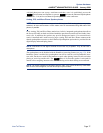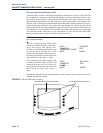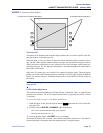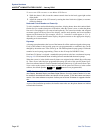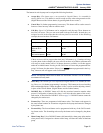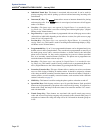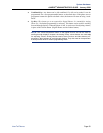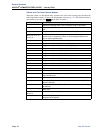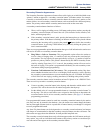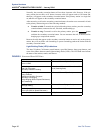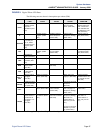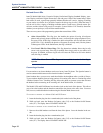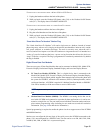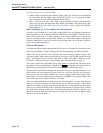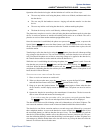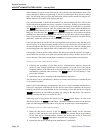
Page 85
System Hardware
AXXESS
®
ADMINISTRATOR’S GUIDE – January 2004
Inter-Tel Phones
Secondary Extension Appearances
The Secondary Extension Appearances feature allows calls ringing or on individual hold at one
“primary” station to appear on a “secondary extension button” at another station. For example,
a secretary or assistant can have a secondary extension button for a supervisor’s station, or one
station can have several secondary extension buttons, each associated with a different primary
station. The primary station and the secondary station must reside on the same node.
A secondary extension button functions as follows:
• When a call is ringing or holding on any Call button at the primary station, pressing the
secondary extension button will answer the call. (This includes recalls, transfers, call-
backs, and hunt group calls.)
• If the secondary extension button is unlit, pressing the button places an intercom call to
the primary station. If the button is flashing, an intercom call can still be placed without
answering the incoming call by pressing the pound ( ) button before the secondary
extension button, by pressing a DSS button, or by manually dialing the primary sta-
tion’s extension number.
There are two programmable options that determine the type of call indications the station user
will receive for calls on a secondary extension button:
• Ring When n Calls At Extension: This programmable option allows the station to
receive a burst of ringing when “n” number of calls are present at the associated pri-
mary station. The ring signal will repeat periodically as long as “n” number of calls are
present at a primary station. (This period is determined by the DKTS Secondary Exten-
sion Key Alerting Tone timer.) If “n” is set to 0, the secondary station will never receive
the burst of ringing. This option is programmed individually for each secondary exten-
sion button, during keymap programming.
• Transient Call Indication On Call Answer: This programmable station flag deter-
mines whether the station user will see a call display when answering a call by pressing
the secondary extension button or reverse-transferring the call. If enabled, the display
will tell if the call was ringing, recalling, transferred, or holding at the primary station.
The secondary extension button can be located on an Inter-Tel phone or on a DSS/BLF Unit.
There are two ways to make a secondary extension button:
• Create a secondary extension button in the keymap and determine which station it will
represent. This will be the same for all stations assigned to that keymap.
• Set the default value of a user-programmable button to “secondary extension button” in
the keymap. This allows each station user assigned to that keymap to determine the
associated station for his or her secondary extension button. (See page 167 for button
programming procedures.)
User-programmable buttons cannot be made into secondary extension buttons by the station
user; they can only be created in the database. Also, the station user cannot change the button
into any other type of button (such as a speed-dial or feature button), even though it is assigned
to a user-programmable button.
Any Inter-Tel phone button can be designated as a secondary extension button, but buttons
with lamps are recommended so that the secondary extension button can show call status. The
table on the next page shows the definition for each possible lamp flash rate.
The secondary extension button shows only calls that appear under the Call buttons at the pri-
mary station. Any calls on individual trunk buttons at the primary station are considered pri-
vate calls and will not appear on the secondary extension button.
#



